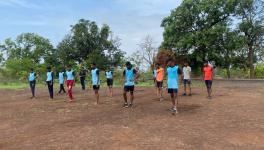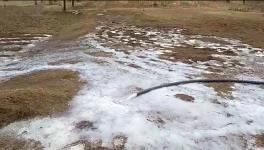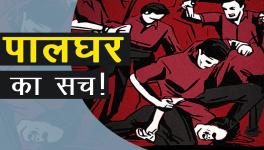Malnourishment Deaths Increase in Palghar, 166 Children Under Age Five Die in 5 Months
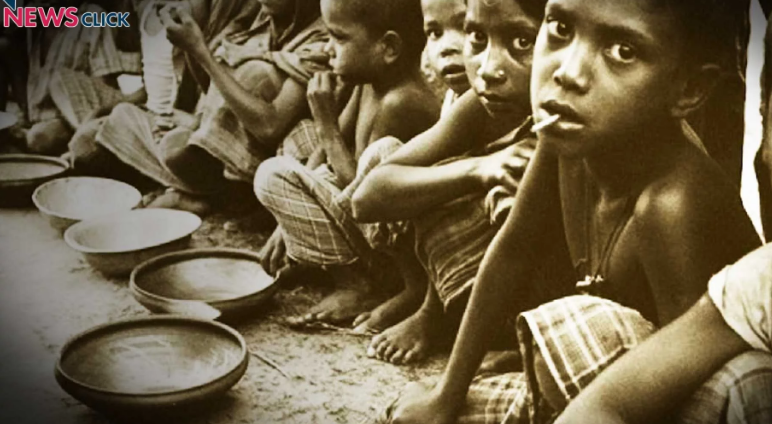
Palghar: Rupali, Ashok Taral’s 15 months old baby, does not stop crying. Weighing 5.4 kgs, she is severely malnourished (SAM) with visible bones and eyes popping out. She often falls ill and has blisters on her body. She has been in the SAM category for the last four months, her father said. Rupesh, Rupali’s twin brother, was also in the SAM category four months ago but now is in the mildly malnourished (MAM) category.
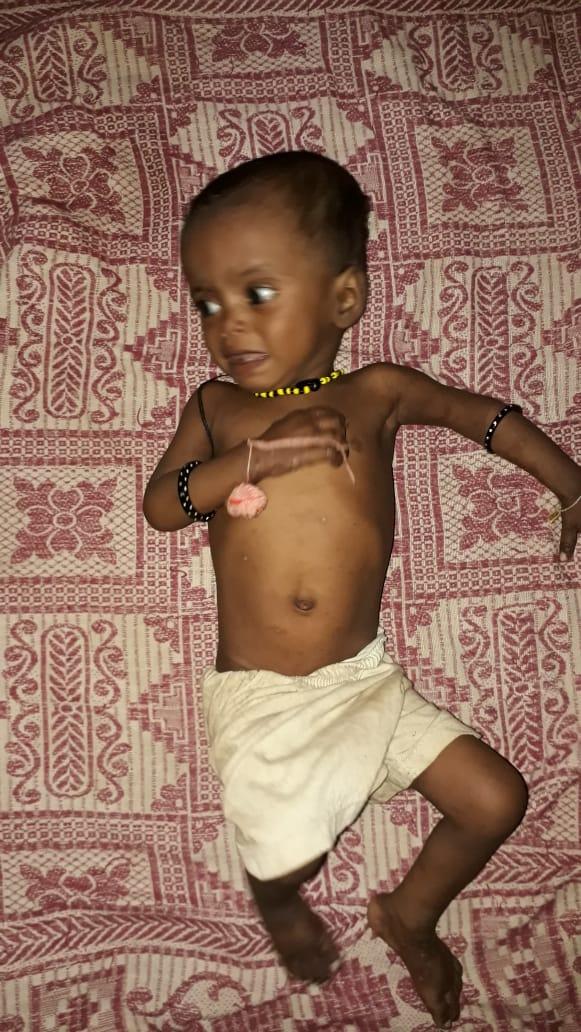
To the baby who is in bed is Rupali Taral, severely acute mal-nourished
Ashok, 25, a Kathkari tribal, cultivates rice and finger millet on their one-acre land in Taralwadi in Jawhar taluka of Palghar in Maharashtra. Ashok and his wife also have to work as labourers as the farm income is not sufficient to feed the family of four. The Kathkari tribe is one among the three Particularly Vulnerable Tribal Group (PVTGs) in Maharashtra.
“We feed rice and dal to both the babies thrice a day. We buy cow milk for them even though we can hardly afford it. What else we can do?,” he asked, as he stood in front of his thatched hut which is hardly 6-7 feet high. Sarika, his wife, said that an Anganwadi worker had given them ration consisting of wheat, rice and pulses.
“Babies over one year should be ideally above 8 kg. Maharashtra government runs the Village Child Development Centres (VCDCs) scheme for kids under SAM and MAM category. Anganwadis, child care centres run by the central government, provide nutritious meals six times a day to the SAM and MAM babies. Kids can become healthy within a month or two if the scheme is implemented properly,” said Sita Ghatal, director, Bal Sanjivani Chhavani, a private centre run by Shramjivi Sanghatana that works for the eradication of malnutrition in Palghar.
Hardly 90 km from Mumbai, also known as the financial capital of India, Palghar has witnessed an increase in children falling in the SAM and MAM categories since the lockdown began in March 2020. Deaths due to undernourishment have also gone up, as per figures provided by the Integrated Child Development Scheme, Zila Parishad, Palghar. The number of malnourished cases has been going down since 2016 steadily though.
Also see: Explained: Children Suffer as Govt. Fails to Ensure Nutrition During Lockdown
“From April to September this year, during the lockdown period, 166 children under age five have died. The number of deaths were 156 last year. The reason for the deaths is not necessarily malnourishment,” Dr. Dayanand Suryawanshi, District Health Officer (DHO), Zila Parishad (ZP), Palghar told NewsClick.
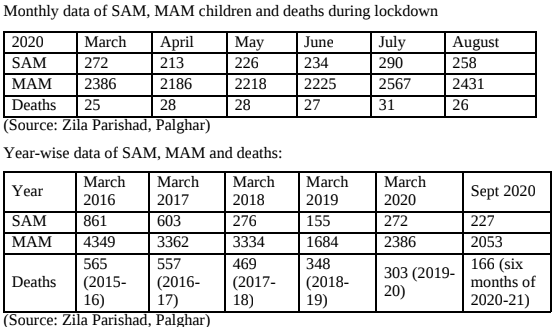
The national average of children under age five years suffering from Wasting (SAM and MAM both) is 21%, as per the National Family Health Survey IV ( NFHS IV), which is much lower than that of Palghar. Maharashtra’s average for SAM and MAM children per 1,000 is 9.4 and 16.4 respectively, according to NFHS 4.
The National Under Five Mortality rate is 50 as per NHFS. For Scheduled Tribes (STs), the number stood at 27. In Maharashtra, the average is 28 deaths per 1,000. However, at over 300 deaths per 1,000 children under age five years Palghar’s mortality rate is way higher than the national and state average.
The district has severe cases of malnourishment and deaths of children due to malnourishment. In Palghar, 59% of children are stunted, 20% wasted and 53% underweight, as per a TISS survey. Nearly 83% of the children had consumed food belonging to only three groups as against the necessary eight groups. The children eat only rice and dal (pulses), as that is what their parents can provide. Only 13% of the children achieved a minimum level of diet diversity, as per the study, ‘Undernutrition among tribal children in Palghar district’. The study, published in February 2019, included 375 tribal households having kids of age 1-6.
MAM Cases
Akash Bala Govind, a 3 year old child, weighing 7.5 kgs was crying in his home where he was sleeping alone. Falling under the MAM category, he was still asleep when his 7-year-old elder brother carried him to us. Taking a look at the child with small legs and visible bones, Sita from Bal Sanjivani commented, “There is no way he is MAM. He falls under the SAM category.”
Gulab, their mother, who had gone to fetch water from a nearby well, returned with two pots on her head. Herself looking malnourished, Gulab said, “I take care of him by cooking separate dal without chilli for him.”

Gulab govind with her Malnourished son Akash.
Also from the Kathkari tribe, Gulab went into her house, a shack made of bamboo and tree trunks and returned with packs of wheat, chana and chilli powder distributed by anganwadi to them under the government-run VCDC scheme.
Nearby, Vrushali Yashwant Govind, another MAM child, was playing with her elder sister near their shack-like hut. Their parents had gone to harvest rice since morning, leaving the babies with their neighbours.
Sita said, “Parents have to go out to work, leaving kids with neighbours or relatives or sometimes even alone at home. Children who are malnourished or ill have to manage without parents till they return.”
Deaths Due to SAM
Shreya, born to Mangala and Laxman Taral, on November 29, 2018, was malnourished for over six months when she died on October 27. Mangala, skinny and gloomy, was holding a newly framed photo of her daughter as she sat at the veranda of her house in Piparpada village of Jawhar taluka. One has to travel 15 km through ghats to reach Piparpada from Jawhar.
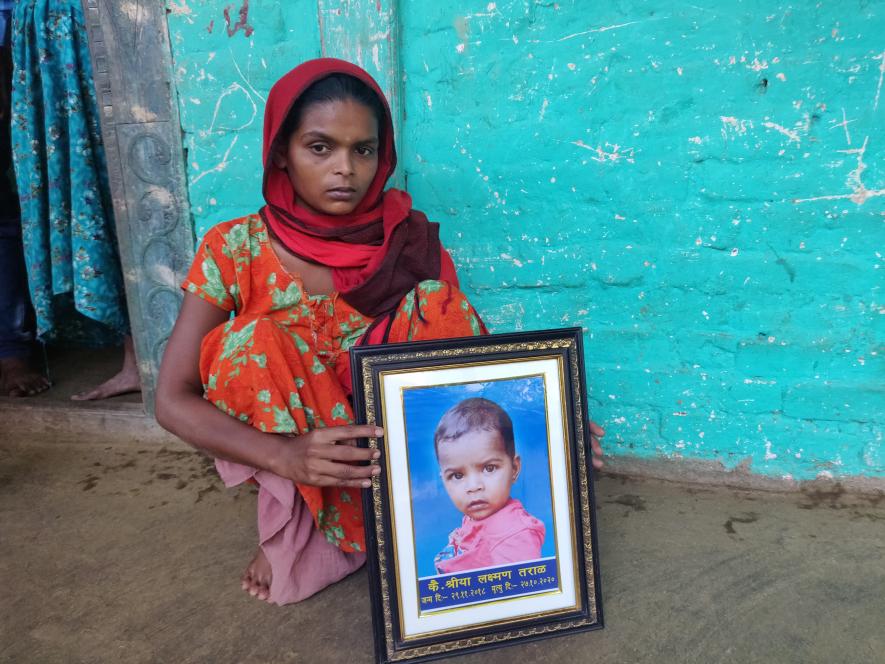
Mangala Taral holds newly framed photo of her daughter Shreya who recently died
“Shreya used to play, laugh, and walk with her walker till a year ago. But then she began to develop dark skin on her legs and hands. She would often get blisters all over the body. We were taking her to the hospital. The Anganwadi worker had categorised her as malnourished. We used to give her all food the provided by the worker,” Mangala told NewsClick.
“We had taken her to doctors at the PHC (primary health centre) and the District Hospital in Palghar a couple of times. We could not take her to Palghar since the lockdown started as it was converted to a COVID-19 hospital. We had also arranged for blood donation for her in a private hospital at Tryambak by borrowing money from relatives. Later, the doctors told us that we should take her to the Thane Civil Hospital but did not tell us when. Meanwhile, she died,” Laxman said. They have two more children, Ajeet, 9, and Ninjila, 6.
Also read: How Not To Tackle Acute Malnutrition
Laxman, from the Thakur tribe, cultivate rice, urad, and finger millet at their 12 acres of land in Piparpada along with his parents, four brothers and their wives. Like most tribals in the region, they produce only for consumption. All four brothers work as construction labourers for a few months at Kalyan, Bhivandi and Palghar, around 50-100 km away from home.
Failure of Integrated Child Development Service (ICDS)?
The ICDS section of the Women and Child Development Department are responsible for providing supplementary nutrition and healthcare to young children. Anganwadis provide nutritious food that include cooked food, milk and fruits. Currently, 15 kgs of the pack including rice, wheat, pulses, salt among other things are given as Take Home Ration (THR) for two months due to the lockdown. Despite that, the number of children with malnourishment and undernourishment are increasing.
However, Sandhya Nagarakar, deputy commissioner, ICDS, Maharashtra, did not respond to questions about measures taken to deal with deaths of kids due to malnutrition.
What do Experts Say
“Almost all the tribals in Palghar work as labourers and they lost their livelihoods due to the lockdown. They have been unable to feed families due to a lack of income for over eight months now. This is one of the major reasons for increased cases of malnourishment and deaths of kids,” said Prachi Hatiwalekar from All India Democratic Women’s Association (AIDWA).
She added, “Besides, tribals are scared to go to the government hospitals and primary health centres due to fear of COVID-19. Lack of treatment for fever or other illnesses is pushing kids into the malnourished category and deaths. They are also superstitious and don’t allow ASHA workers to enter the houses to check kids, again due to fear of COVID-19.”
“Increased deaths cannot be linked only with lockdown or the pandemic. Illiteracy, extreme poverty, lack of livelihood options, lack of accessible healthcare, and poor health of mothers are major reasons of undernourishment. Not only WCD but all departments are responsible for this undernourishment,” another activist told on condition of anonymity.
Composition of Palghar
Palghar district’s population is 15.47 lakh, out of which 37% are Scheduled Tribes (STs). Six of the eight talukas are tribal majority, including Warli, Thakur, Malhar Kolis, Konkana, and Kathkaris.
As per the 2019 TISS study, “47% of mothers were illiterate and every second mother married before 18 years of age. 95% of them were found to be living in Kuccha (25%) and Semi-pucca houses (70%). Further, almost 40% of the households did not have a toilet. Nearly 9 out of 10 families used wood as fuel for cooking. More than half of the households reported using well-water (54%), which is considered as an unimproved source of water according to WASH guidelines.”
Another study, ‘Socio-economic study of tribal households in Palghar District’ by Rajendra Patange, published in 2017, underlines the acute poverty levels among the tribals in the region. It stated, “Though 54% of the tribals are farmers, their lands are not very fertile and without irrigation. They work as labourers either at farms or at other places. Their per capita income is Rs 14,217. They don’t have enough income to educate children. Landless tribals (over 40%) also face the constant problem of unemployment. Their consumption of calories (2263 cal) is much lesser than the required (2688).”
Also read: 8.82 Lakh Under-5 Deaths in India in 2018: UNICEF Report
The writer is an independent journalist from Maharashtra.
Get the latest reports & analysis with people's perspective on Protests, movements & deep analytical videos, discussions of the current affairs in your Telegram app. Subscribe to NewsClick's Telegram channel & get Real-Time updates on stories, as they get published on our website.










